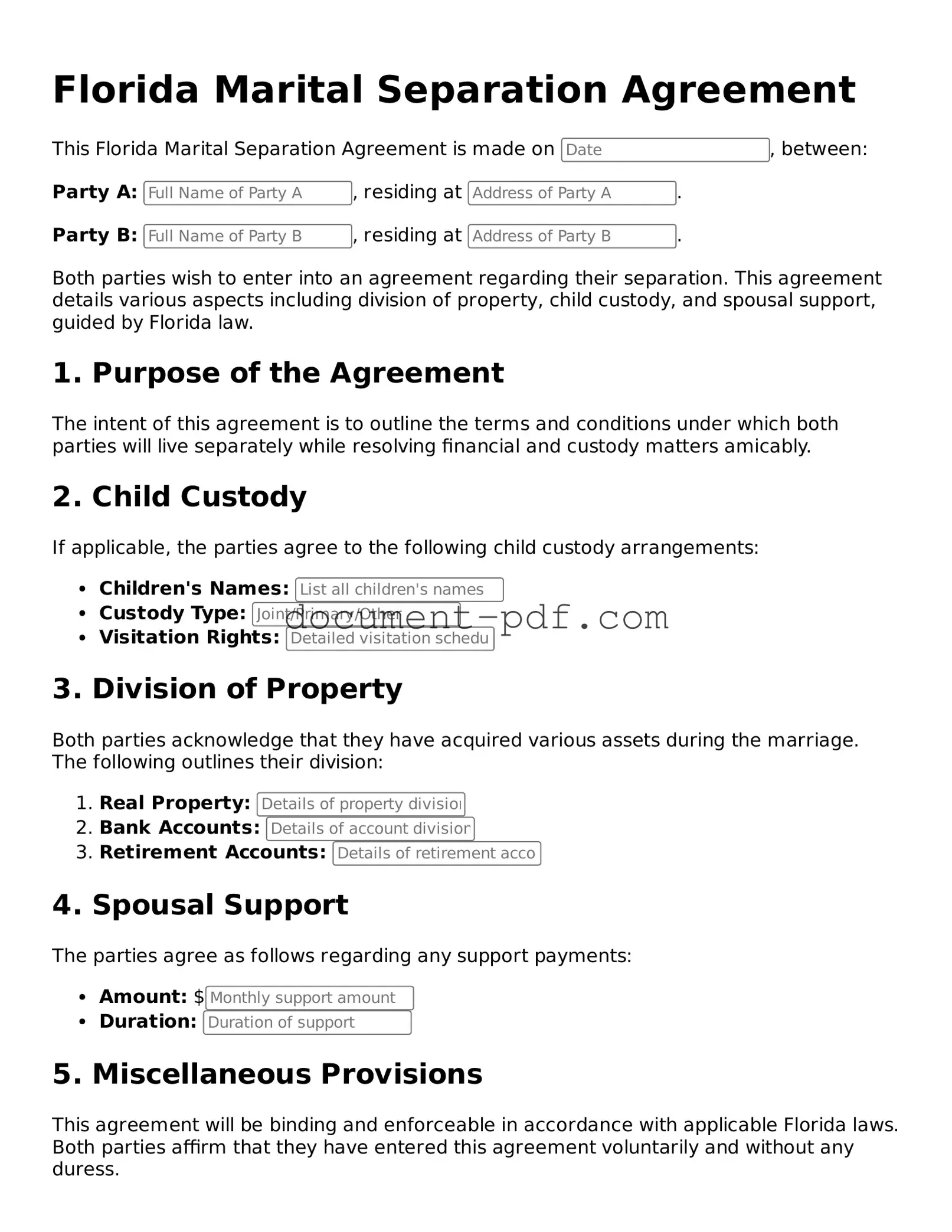Attorney-Verified Florida Marital Separation Agreement Template
A Florida Marital Separation Agreement form is a legal document that outlines the terms and conditions agreed upon by spouses who wish to live separately while remaining legally married. This agreement addresses various aspects of the marital relationship, including asset division, child custody, and support obligations. Understanding this form is crucial for ensuring that both parties are protected during the separation process.
To begin the process of filling out the Florida Marital Separation Agreement form, click the button below.
Access Marital Separation Agreement Editor Here
